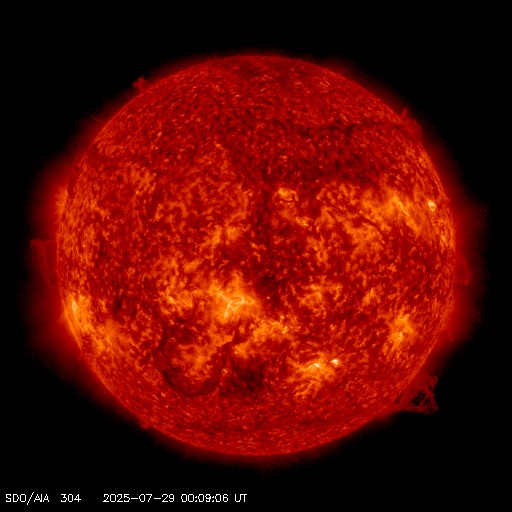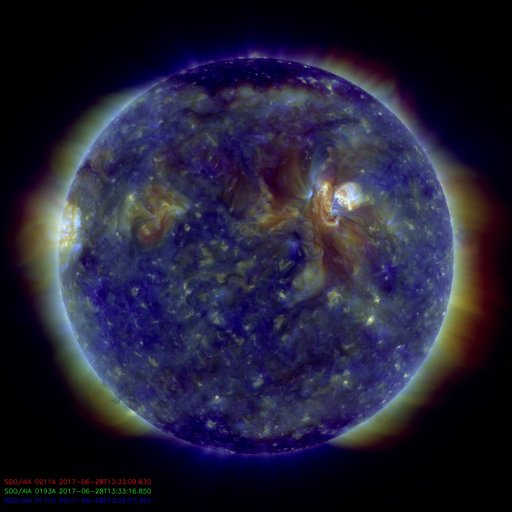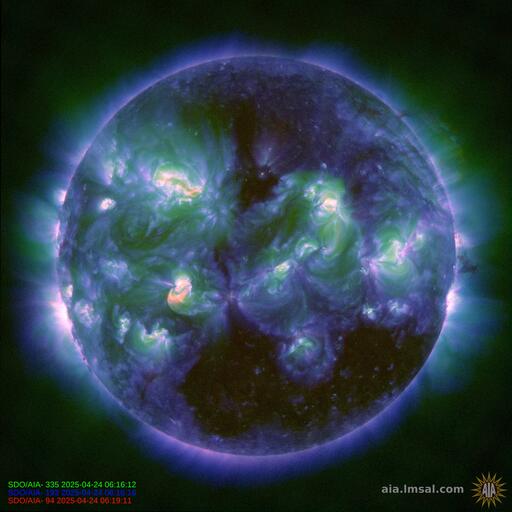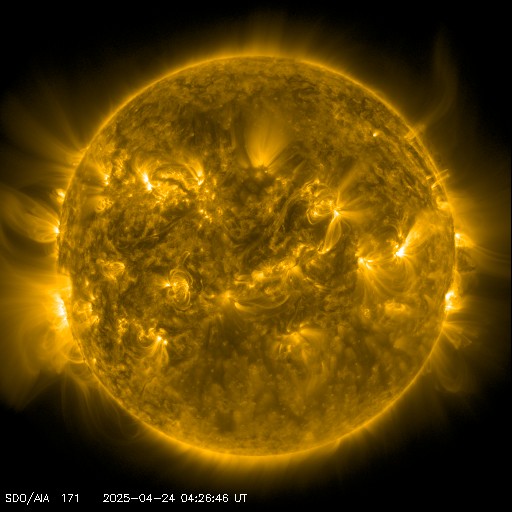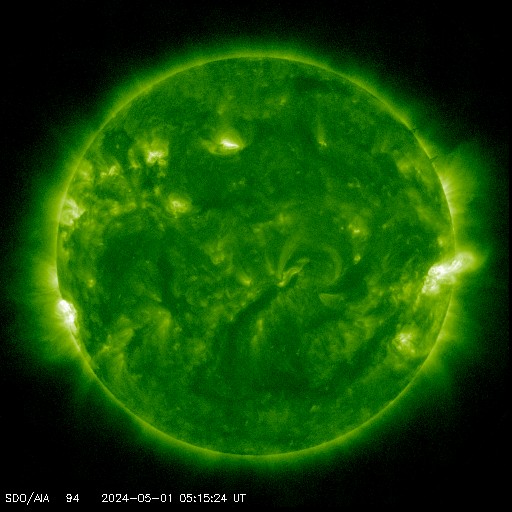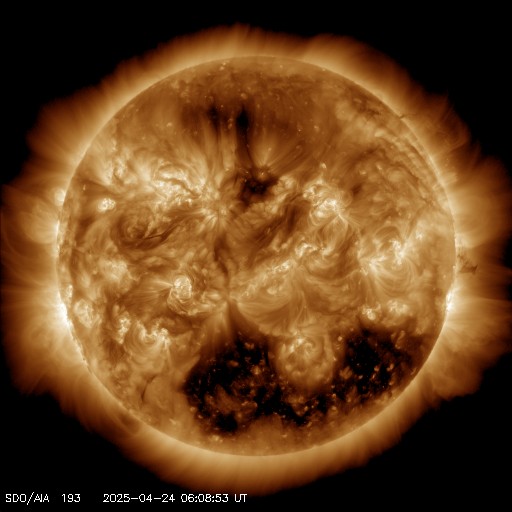Solar Alerts Monitoring
Tuesday, April 17, 2012
Monday, April 16, 2012
M 1.7 Solar flare and Partial halo CME
UPDATE 04/17/2012 16:00 UTC
A few C-class flares and an M-class flare were observed during
the past 24 hours. We expect active conditions with C-class and M-class
flares possible. An M1.7 flare was observed by GOES on April 16, peaking
at 17:40 UT. The flare originated from an active region (Catania 03; old Sunspot 1442/43) which appeared now on the east limb. The accompanying CME propagated
with the speed of about 1300 km/s.
Reporting to Solen.info:
A partial halo CME was observed after the M1 event in region
S1592. There's a chance of a flank CME impact on April 19
http://www.solen.info/solar/ Region 1459 increased at a more rapid pace to a FHI group at 260 millionths, making it the largest visible sunspot group
Region 1459 increased at a more rapid pace to a FHI group at 260 millionths, making it the largest visible sunspot group
New region S1592 [N12E80](associated to the M1 event) rotated into view at the northeast limb and will be soon numbered 1461. nFurther C class and a slight chance of an M class flare are possible over the coming days
Video shows you the increasing Region 1459:
Friday, April 13, 2012
Geomagnetic Storm / Mid Latitude Aurora
The Coronal Hole High Speed Stream winds have stired up a G1 storm and a mid latitude Aurora. Will you be able to see the Aurora from your location? Click here OVATION Auroral Forecast, to see where the Aurora can be see from. Research more about the Aurora in our Q an A guides Q&A/Guides. The effects of the CHHSS are expected to continue through the 13th before diminishing on the 14th and returning to quiet levels on the 15th.
Space Weather Message Code: ALTK05
Serial Number: 682
Issue Time: 2012 Apr 13 0234 UTC
ALERT: Geomagnetic K-index of 5
Threshold Reached: 2012 Apr 13 0207 UTC
Synoptic Period: 0000-0300 UTC
Active Warning: Yes
NOAA Scale: G1 - Minor
Potential Impacts: Area of impact primarily poleward of 60 degrees Geomagnetic Latitude.
Induced Currents - Weak power grid fluctuations can occur.
Spacecraft - Minor impact on satellite operations possible.
Aurora - Aurora may be visible at high latitudes, i.e., northern tier of the U.S. such as northern Michigan and Maine.
Wednesday, April 11, 2012
Rapidly developing Sunspot Region bursts onto the surface.S1576 [N07E23], (1455?)
Beginning at approximately 19:54UTC on April 10 2012 a new Sunspot Region exploded onto the surface in a spectacular display from new region S1576 [N07E23], having just emerged with an east-west inversion line. This region is not yet numbered by NOAA/SWPC, but it is anticipated that it will be numbered Region 1455 later on today. This new region is shown imaged left by the SDO Magnetogram. An animated gif of the Magnetogram showing the rapid development of this region is below and can be viewed by clicking on the image. This region will be rotating toward a more Earth aligned position over the next couple of days increasing the chances of activity from this region becoming geoeffective.
Subscribe to:
Comments (Atom)

